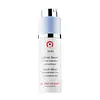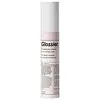What's inside
What's inside
 Key Ingredients
Key Ingredients

 Benefits
Benefits

 Concerns
Concerns

 Ingredients Side-by-side
Ingredients Side-by-side

Water
Skin ConditioningPolysorbate 80
EmulsifyingCaprylic/Capric Triglyceride
MaskingPolysorbate 20
EmulsifyingButylene Glycol
HumectantPersea Gratissima Oil
Skin ConditioningGlycerin
HumectantDimethicone
EmollientRetinol
Skin ConditioningMagnesium Ascorbyl Phosphate
AntioxidantColloidal Oatmeal
AbsorbentTocopherol
AntioxidantHydrolyzed Hyaluronic Acid
HumectantCeramide NP
Skin ConditioningAcetyl Hexapeptide-8
HumectantLinoleic Acid
CleansingAllantoin
Skin ConditioningPhytosteryl Canola Glycerides
Skin ConditioningPalmitic Acid
EmollientOleic Acid
EmollientGlycine Soja Oil
EmollientHydroxypropyl Cyclodextrin
MaskingAloe Barbadensis Leaf Juice
Skin ConditioningTriolein
Skin ConditioningCaprylyl Glycol
EmollientAcrylates/C10-30 Alkyl Acrylate Crosspolymer
Emulsion StabilisingXanthan Gum
EmulsifyingLecithin
EmollientStearic Acid
CleansingMaltodextrin
AbsorbentBHT
AntioxidantBHA
AntioxidantPhenoxyethanol
PreservativeSodium Hydroxide
BufferingPotassium Sorbate
PreservativeWater, Polysorbate 80, Caprylic/Capric Triglyceride, Polysorbate 20, Butylene Glycol, Persea Gratissima Oil, Glycerin, Dimethicone, Retinol, Magnesium Ascorbyl Phosphate, Colloidal Oatmeal, Tocopherol, Hydrolyzed Hyaluronic Acid, Ceramide NP, Acetyl Hexapeptide-8, Linoleic Acid, Allantoin, Phytosteryl Canola Glycerides, Palmitic Acid, Oleic Acid, Glycine Soja Oil, Hydroxypropyl Cyclodextrin, Aloe Barbadensis Leaf Juice, Triolein, Caprylyl Glycol, Acrylates/C10-30 Alkyl Acrylate Crosspolymer, Xanthan Gum, Lecithin, Stearic Acid, Maltodextrin, BHT, BHA, Phenoxyethanol, Sodium Hydroxide, Potassium Sorbate
Water
Skin ConditioningGlycerin
HumectantPropanediol
SolventCetyl Ethylhexanoate
EmollientC13-15 Alkane
SolventCetyl Alcohol
EmollientButyrospermum Parkii Butter
Skin ConditioningCetearyl Olivate
Coconut Alkanes
EmollientSorbitan Olivate
EmulsifyingPotassium Cetyl Phosphate
EmulsifyingBetaine
HumectantRetinyl Sunflowerseedate
Skin ConditioningStevia Rebaudiana Leaf/Stem Extract
MaskingOphiopogon Japonicus Root Extract
Skin ConditioningCamellia Oleifera Leaf Extract
AstringentAloe Barbadensis Leaf Juice
Skin ConditioningSodium Hyaluronate
HumectantTocopherol
AntioxidantCoco-Caprylate/Caprate
EmollientEthylhexylglycerin
Skin ConditioningGlycol Stearate
EmollientGlyceryl Stearate
EmollientCaprylic/Capric Triglyceride
MaskingMaltodextrin
AbsorbentXanthan Gum
EmulsifyingBenzoic Acid
MaskingSodium Hydroxide
BufferingCarbomer
Emulsion StabilisingSodium Acrylate/Sodium Acryloyldimethyl Taurate Copolymer
Emulsion StabilisingTrisodium Ethylenediamine Disuccinate
Water, Glycerin, Propanediol, Cetyl Ethylhexanoate, C13-15 Alkane, Cetyl Alcohol, Butyrospermum Parkii Butter, Cetearyl Olivate, Coconut Alkanes, Sorbitan Olivate, Potassium Cetyl Phosphate, Betaine, Retinyl Sunflowerseedate, Stevia Rebaudiana Leaf/Stem Extract, Ophiopogon Japonicus Root Extract, Camellia Oleifera Leaf Extract, Aloe Barbadensis Leaf Juice, Sodium Hyaluronate, Tocopherol, Coco-Caprylate/Caprate, Ethylhexylglycerin, Glycol Stearate, Glyceryl Stearate, Caprylic/Capric Triglyceride, Maltodextrin, Xanthan Gum, Benzoic Acid, Sodium Hydroxide, Carbomer, Sodium Acrylate/Sodium Acryloyldimethyl Taurate Copolymer, Trisodium Ethylenediamine Disuccinate
 Reviews
Reviews

Ingredients Explained
These ingredients are found in both products.
Ingredients higher up in an ingredient list are typically present in a larger amount.
Aloe Barbadensis Leaf Juice comes from leaves of the aloe plant. Aloe Barbadensis Leaf Juice is best known for helping to soothe sunburns. It is also anti-inflammatory, moisturizing, antiseptic, and can help heal wounds.
Aloe is packed with good stuff including Vitamins A, C, and E. These vitamins are antioxidants, which help fight free-radicals and the damage they may cause. Free-radicals are molecules that may damage your skin cells, such as pollution.
Aloe Barbadensis Leaf Juice also contains sugars. These sugars come in the form of monosaccharides and polysaccharides, folic acid, and choline. These sugars are able to help bind moisture to skin.
It also contains minerals such as calcium, 12 anthraquinones, fatty acids, amino acids, and Vitamin B12.
Learn more about Aloe Barbadensis Leaf JuiceThis ingredient is an emollient, solvent, and texture enhancer. It is considered a skin-softener by helping the skin prevent moisture loss.
It helps thicken a product's formula and makes it easier to spread by dissolving clumping compounds.
Caprylic Triglyceride is made by combining glycerin with coconut oil, forming a clear liquid.
While there is an assumption Caprylic Triglyceride can clog pores due to it being derived from coconut oil, there is no research supporting this.
Learn more about Caprylic/Capric TriglycerideGlycerin is already naturally found in your skin. It helps moisturize and protect your skin.
A study from 2016 found glycerin to be more effective as a humectant than AHAs and hyaluronic acid.
As a humectant, it helps the skin stay hydrated by pulling moisture to your skin. The low molecular weight of glycerin allows it to pull moisture into the deeper layers of your skin.
Hydrated skin improves your skin barrier; Your skin barrier helps protect against irritants and bacteria.
Glycerin has also been found to have antimicrobial and antiviral properties. Due to these properties, glycerin is often used in wound and burn treatments.
In cosmetics, glycerin is usually derived from plants such as soybean or palm. However, it can also be sourced from animals, such as tallow or animal fat.
This ingredient is organic, colorless, odorless, and non-toxic.
Glycerin is the name for this ingredient in American English. British English uses Glycerol/Glycerine.
Learn more about GlycerinMaltodextrin is a polysaccharide. It is derived from starch such as rice, corn, wheat, or potato starch.
In food, Maltodextrin is used to improve the texture and thicken a product. Due to its structure, it can help create a gel texture. As an emulsion stabilizer, it helps keep the ingredients in a product together.
As a polysaccharide, Maltodextrin has moisturizing properties. Polysaccharides are a type of carbohydrate. The top layer of skin uses polysaccharides to retain water, keeping the skin hydrated.
Maltodextrin is water soluble and has a sweet taste.
Learn more about MaltodextrinSodium Hydroxide is also known as lye or caustic soda. It is used to adjust the pH of products; many ingredients require a specific pH to be effective.
In small amounts, sodium hydroxide is considered safe to use. However, large amounts may cause chemical burns due to its high alkaline.
Your skin has a natural pH and acid mantle. This acid mantle helps prevent harmful bacteria from breaking through. The acid mantle also helps keep your skin hydrated.
"Alkaline" refers to a high pH level. A low pH level would be considered acidic.
Learn more about Sodium HydroxideTocopherol (also known as Vitamin E) is a common antioxidant used to help protect the skin from free-radicals and strengthen the skin barrier. It's also fat soluble - this means our skin is great at absorbing it.
Vitamin E also helps keep your natural skin lipids healthy. Your lipid skin barrier naturally consists of lipids, ceramides, and fatty acids. Vitamin E offers extra protection for your skin’s lipid barrier, keeping your skin healthy and nourished.
Another benefit is a bit of UV protection. Vitamin E helps reduce the damage caused by UVB rays. (It should not replace your sunscreen). Combining it with Vitamin C can decrease sunburned cells and hyperpigmentation after UV exposure.
You might have noticed Vitamin E + C often paired together. This is because it is great at stabilizing Vitamin C. Using the two together helps increase the effectiveness of both ingredients.
There are often claims that Vitamin E can reduce/prevent scarring, but these claims haven't been confirmed by scientific research.
Learn more about TocopherolWater. It's the most common cosmetic ingredient of all. You'll usually see it at the top of ingredient lists, meaning that it makes up the largest part of the product.
So why is it so popular? Water most often acts as a solvent - this means that it helps dissolve other ingredients into the formulation.
You'll also recognize water as that liquid we all need to stay alive. If you see this, drink a glass of water. Stay hydrated!
Learn more about WaterXanthan gum is used as a stabilizer and thickener within cosmetic products. It helps give products a sticky, thick feeling - preventing them from being too runny.
On the technical side of things, xanthan gum is a polysaccharide - a combination consisting of multiple sugar molecules bonded together.
Xanthan gum is a pretty common and great ingredient. It is a natural, non-toxic, non-irritating ingredient that is also commonly used in food products.
Learn more about Xanthan Gum